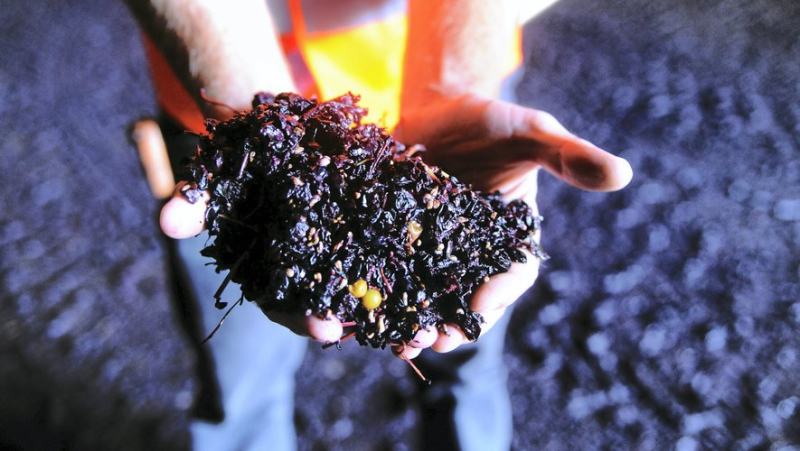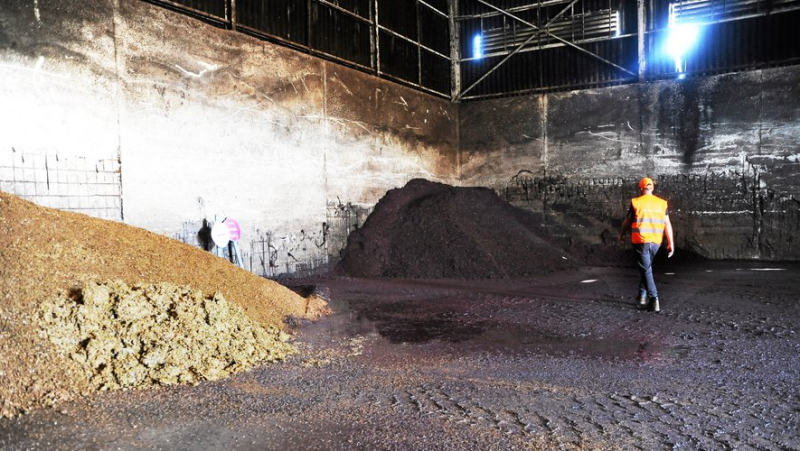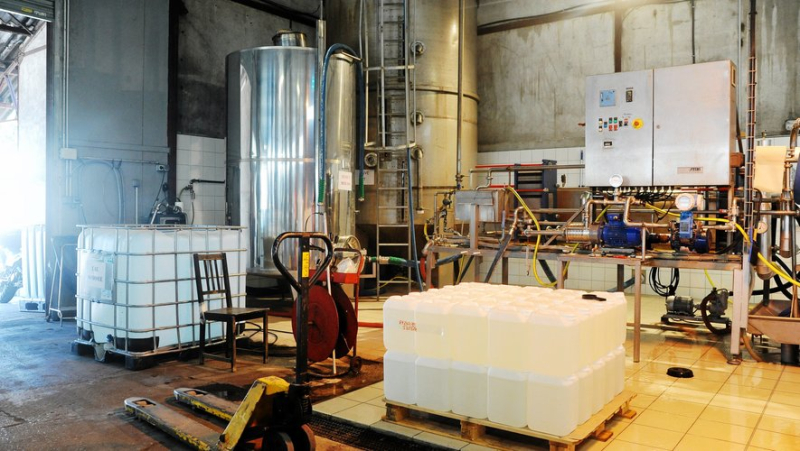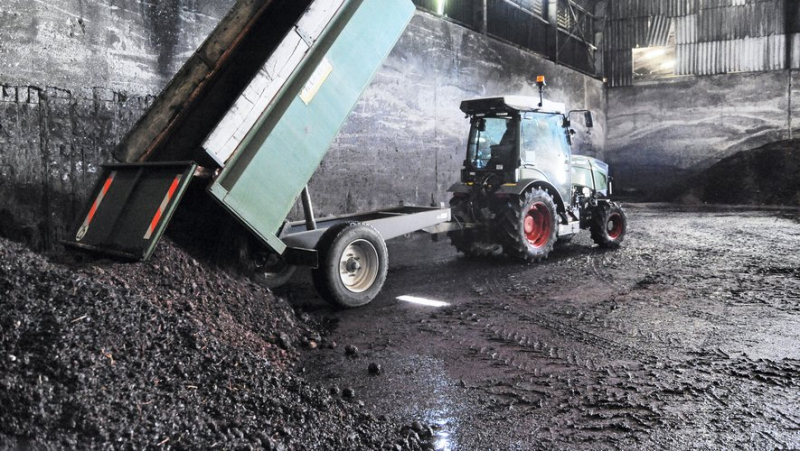Harvest: the marc season is in full swing in Hérault

Grape marc, a raw material that offers multiple fields of valorization. Midi Libre – JEROME MOUILLOT

Le marc de raisin, une matière première qui offre de multiples champs de valorisation. Midi Libre – JEROME MOUILLOT

L'atelier de MCR Midi Libre – JEROME MOUILLOT

Grape marc, a raw material that offers multiple fields of development. Midi Libre – JEROME MOUILLOT
In full swing, the Distillerie de Saint-André-de-Sangonis opened its doors to us. The structure is owned by the UDM group, Union des Distillerie de la Méditerranée, the French leader in the distillery of viticulture by-products, which recently joined forces with GrapSud, giving birth to Vita Nova, the world leader in the sector.
With the grape harvest season upon us, the ballet of tractors has resumed service at “La distillerie” in Saint-André, where winegrowers and local cooperatives take their grape marc. Next to the old cooperative cellar, the wine-growing structure, which is over a century old, is still very much alive. And while its primary functions as a distillery have been a thing of the past for ages, the Saint-André site belongs to the Union des Distillerie de la Méditerranée* and today focuses its activity on logistics functions (in particular, in connection with the UDM distilleries in Olonzac and Lespignan) but also on the production of rectified concentrated must (MCR).
A workshop for manufacturing MCR
“MCR is a natural liquid grape sugar that is made from grape must”, explains Régine Favier, UDM sales representative, who sells wine products to the group's members and customers. The product, which has the appearance and viscosity of a colorless syrup, is used in winemaking. A southern counterpart to “chaptalization” which is made with dry sugar from beets in the northern regions of France, where it is authorized, but which is prohibited in the South. On the southern side, "“the enrichment of musts”"is however authorized with the MCR which is also used as a sweetener for wines whose typicality it does not change. There, it "just allows to increase the sweetness of the wine. This is often used for export to Scandinavian countries, mainly on rosés and whites".
Decontamination and recovery
"From mid-August to the end of October, in Saint-André, we collect on average 9,000 tons of marc per year. (In Saint-André). After this period, the collection of wine lees comes into service and is redistributed to the production sites”, reports Samuel Blume, Hérault, Aude manager at UDM. More broadly, last year, the UDM* group processed 188,000 tonnes of marc processed on these different sites. “Certainly, we depollute, but we also recycle until the end. Our tool is useful for future generations but it is also useful for preserving winegrowers so that we can continue, together, to move forward”, explains Vanessa Delaëre, Secretary General of UDM. Thus, UDM recycles waste from viticulture through a multitude of products. Oenological products (MCR, grape seed tannins, neutral alcohol, tartaric acid), spirits, cartagenes but also natural inputs thanks to the production of compost and liquid fertilizer. Thus, "we process 20% of French wine production by promoting short circuits", specifies Samuel Blume.
Second-generation fuel
Distillation processes also allow the production of fuel alcohol, ED95, which powers, for example, around fifteen buses in the Metropolis. But, unlike other biofuels, this one is second generation: “Winegrowers do not plant vines to produce biofuel. It is the waste, the by-product, that is used to make biofuel”, insists Vanessa Dalaëre. Last but not least, of course, crisis distillations allow, if necessary, to support and regulate wine markets. Last year, one million hectolitres of wine were subscribed to by UDM to be removed from the market.
And also…
The winegrowers and cellars in the area take their marc to the UDM distillery in Saint-André. The site thus collects 9,000 tonnes of marc per year. At the group level, 188,000 tonnes of this waste are recovered by the company which “gives a second life to grapes”.
In Saint-André, the site includes a workshop for the production of rectified concentrated must. The rectified concentrated must (RCM) is used in winemaking but also in the manufacturing processes for champagne, blanquette de Limoux, crémant d’Alsace or other sparkling wines… The Saint-André site plays an important logistical role in connection with the 5 other UDM sites. These are located in Vauvert, Olonzac, Lespignan, Vallon-Pont-d’Arc and in Beaujolais.
The Distillery is owned by the UDM group, based in Vauvert. Since this summer, the French leader in distilling viticulture by-products has joined forces with GrapSud, giving birth to Vita Nova, the world leader in the sector.
I subscribe to read the rest




